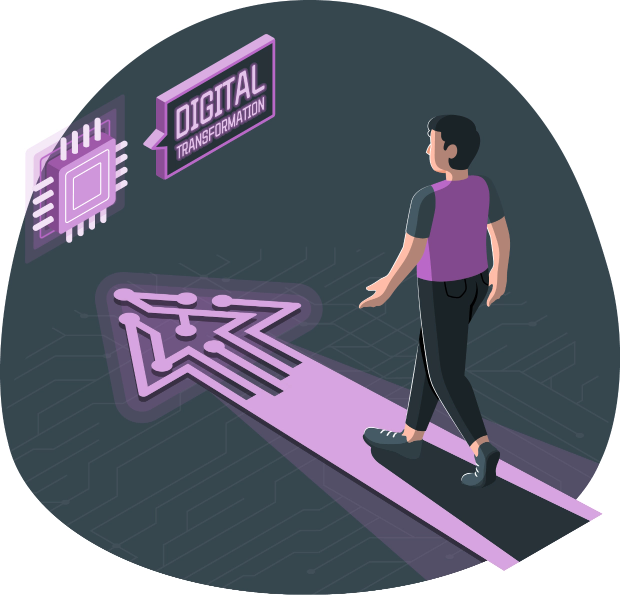About Digital ITI
About DET and Digital ITI Initiative:
Employment Wing
Training Wing
Overseas Wing
1. To enrich youth/workers with systematic training and provide skilled workforce to the industry:
Developing and implementing industry-aligned training programs. The training programs are tailored to meet the specific needs of the industry and is updated regularly to reflect the latest trends and technologies. This involves partnering with industry stakeholders, such as employers, trade associations, and government agencies. This shapes the training programs relevant and effective through providing job opportunities for graduates, providing financial and other support to trainees. This may include scholarships, grants, and job placement assistance. Using innovative training methods, such as online learning and blended learning. This will make the training programs more accessible and flexible for trainees.
2. To reduce unemployment among educated youths by equipping them with suitable skills for Industrial Employment, Service Sector Employment and Self-Employment:
- Developing and implementing industry-aligned training programs. The training programs should be designed to meet the specific needs of the industry and should be updated regularly to reflect the latest trends and technologies.
- Partnering with industry stakeholders, such as employers, trade associations, and government agencies. This will help to ensure that the training programs are relevant and effective, and that there are job opportunities available for graduates.
- Providing financial and other support to trainees. This may include scholarships, grants, and job placement assistance.
- Using innovative training methods, such as online learning and blended learning. This will make the training programs more accessible and flexible for trainees
By achieving these goals, DET can help create a workforce that is equipped with the skills needed to meet the demands of the industry and to reduce unemployment among educated youths.
Digital ITI Initiative
Improving the quality of vocational education enriches learning more rewarding and leads to better job prospects and self-employment opportunities for candidates, which contributes to the country’s economic development. A significant increase in the number of unemployed youths who are job-ready and the number of jobs available to them can only be achieved by improving the quality of training imparted in ITIs. We must overhaul the quality of vocational education in order to prepare our students/candidates to compete in the global market. The Industry 4.0 or IR 4.0 is underway, with new technologies blurring the lines between the physical, digital, and biological worlds. This revolution is driven by technological innovations in fields such as artificial intelligence, robotics, the Internet of Things, and nanotechnology. The younger generation and the ever-changing advancements in technology require a completely new approach of skill ecosystem and curricula, in order to predict and prepare for the skills that will be in demand in the future. While DET currently governs 65 physical Government-run ITIs and 235 physical Private ownership-run ITIs, a new initiative has been taken to start a Digital ITI to deliver the training through Online and Blended Learning modes. The primary objectives of Digital ITI are:

1. To help applicants/ aspirants join the preferred trade and complete the training with utmost flexibility.
2. To help those who had already completed their trade certification to upskill themselves and get additional certifications.
3. To help the dependents of registered BOCW workers gain formal, recognized, and employable trade certifications.
By taking this innovative step, DET assists in ensuring that all educated youths have the opportunity to develop the skills they need to succeed in the workforce.
Digital ITI – Blended ITI Program Advantage

Accessibility
Online digital learning allows students to access educational content and resources from anywhere, at any time. This makes education more accessible to balance personal, professional and academic life.

Cost-effectiveness
Online digital learning can be more cost-effective than traditional classroom learning, as it eliminates the need for physical classrooms, textbooks, and travel.

Flexibility
We all value autonomy. Online learning allows students to learn at their own pace and on their own schedule.

Innovation
Online digital learning encourages innovation in teaching methods and instructional design. Digital ITI incorporate a variety of multimedia resources, interactive tools, and collaborative learning activities

